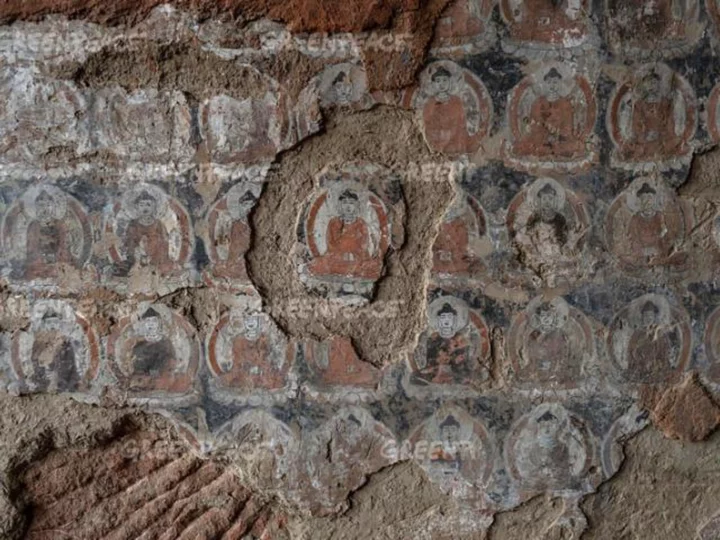Ancient Buddhist murals and statues in caves along China's Silk Road are under "direct threat" from extreme rainfall brought by climate change, researchers have found.
Dating back to the 4th century, the Dunhuang cave temples in the northwestern province of Gansu have withstood wars, earthquakes, sandstorms and vandalism for more than a millennium.
But now, changing weather patterns in the desert are posing significant damage to the fragile wall paintings and sculptures -- including at the famous Mogao Caves, a UNESCO World Heritage Site, according to a report released Monday by Greenpeace.
"Gansu is famous for its caves and the art stored inside them for centuries," said Li Zhao, a senior researcher in Greenpeace East Asia's Beijing office. "Increased bouts of rainfall in the desert pose an acute risk. Spikes in humidity, flash floods, and cave ins are already happening."
Over the past two decades, Gansu has seen an increase in total rainfall but a drop in the number of rainy days, resulting in more bouts of intense downpours. Temperatures in the province have also been rising faster than the global average, according to the report.
The artworks in some caves, including the Mogao Grotto, have already shown signs of deterioration. And some artifacts could be gone in a few years, the report warned.
Rising humidity has accelerated the crystallization and build up of salt on the murals' surface, causing them to flake and peel. Rainwater leaks have also eroded the paintings, while flash floods and mudslides caused some caves to collapse, the report added.
The report comes as China is conducting its fourth nationwide cultural heritage survey to log the state of the country's historical artifacts.
But Li warned that by the time the survey is completed, some of Gansu's precious artifacts could already be gone.
"While we're still working to document, understand, and conserve these pieces of our history, they're dissolved before our very eyes. This is a painful reality of the impact of climate change," Li said.
"The sites we looked at include some of the most well-funded, best-staffed cultural heritage sites in China. There are hundreds of less-funded, less-studied sites all around China that are facing these same risks."
In October 2021, heavy downpours and flooding hit the northern province of Shanxi, causing the collapse of the Jinci Temple and Tianlongshan grottoes, both national heritage sites, Chinese state media reported at the time. A total of 1,783 cultural relic sites were affected, according to Shanxi authorities.
Li said Chinese officials and academics are increasingly aware of the threats of the climate crisis on the country's cultural heritage sites. But when it comes to concrete actions -- both in terms of monitoring the impact and protective measures, it is only the beginning, she added.
Unlike Dunhuang, many historical sites lack long-term monitoring data to research the impacts of climate change, Li said. The Dunhuang Academy has decades of data on the temperature, humidity and wind speed both inside and outside the caves, thanks to its international cooperation projects that began in the 1960s, she added.
"The data can paint a clear picture on the impacts of environmental changes on the cultural relics. But in many other places, monitoring work has only just started in recent years," Li said.

